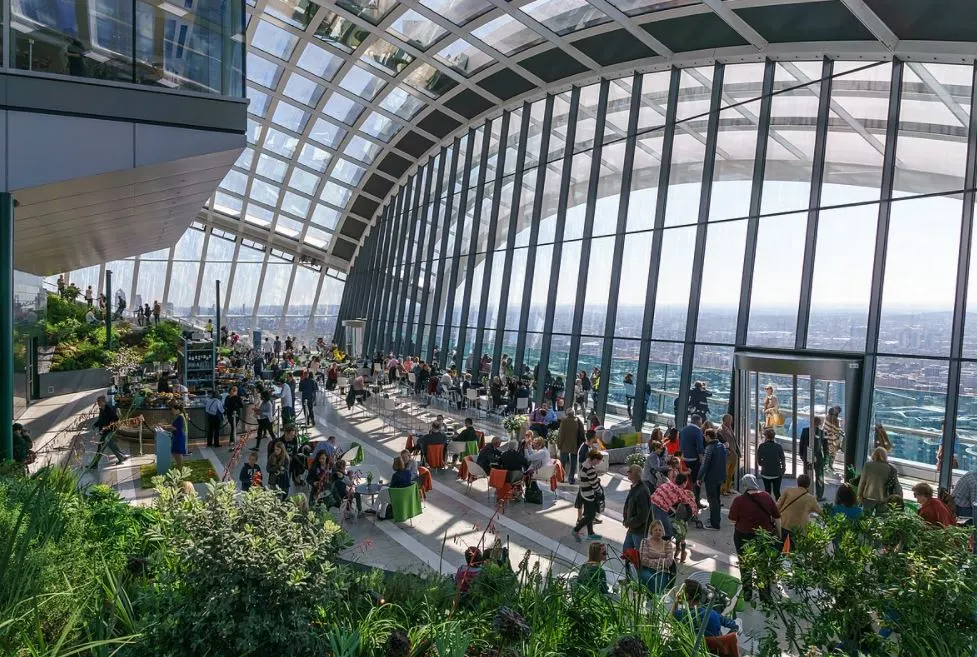Buildings are sometimes named after the thing they resemble. There’s the “Bottle Opener” in Shanghai (the Shanghai World Financial Center), and the less flattering nickname the “Suppository” in Barcelona (Torre Glòries).
The same applies to a fascinating skyscraper in the city of London with a remarkable design.
In this article, you’ll discover the most interesting facts about the Walkie-Talkie Building, a skyscraper in London officially known as 20 Fenchurch Street.
1. It’s located in between 2 of London’s most famous landmarks
20 Fenchurch Street is one of the most peculiar skyscrapers in London and it’s located right in the heart of the city’s historical center. This neo-futuristic skyscraper is situated just a few hundred meters off the north bank of the River Thames in the City of London.
It’s not the only modern skyscraper in the area because just north we can find 30 St Mary Axe, better known by its nickname “The Gherkin.”
More remarkable is the fact that it’s situated right in between some of the most famous historic landmarks in London, the Tower of London to its southeast and St. Paul’s Cathedral to its northwest.
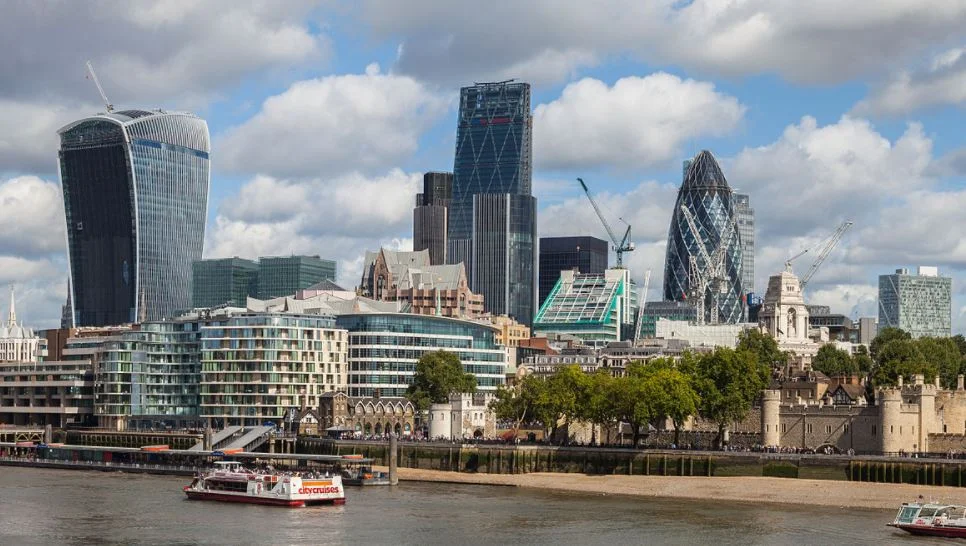
2. The tower was originally planned to become much higher
Its location was one of the main reasons why the tower wasn’t made as high as originally planned. Its original design would have turned this into one of the most dominating structures in central London at a height of nearly 200 meters (656 feet).
This didn’t happen out of fear that the visual impact on both St Paul’s Cathedral and the Tower of London would have been too great, so its height was reduced by nearly 40 meters (131 feet).
This means that the so-called Walkie-Talkie Building has 37 floors and stands 160 meters (525 feet) tall.

3. The building was designed by a renowned Uruguayan architect

The peculiar design of the commercial skyscraper was created by Uruguayan architect Rafael Viñoly, a man known for his design of modern and futuristic structures.
Some of his major works include the Tokyo International Forum in Tokyo, Japan, the Curve Theater in Leicester, England, and 432 Park Avenue, a remarkable skyscraper in New York City.
These are just a few of the dozens of high-level projects that the man has been involved in with his architectural company “Rafael Viñoly Architects.”

4. Another tall office building on the site had to be demolished first
Perhaps one of the most interesting facts about the Walkie-Talkie Building is that the site it was built on was originally occupied by another tall office building occupied by a private bank called “Dresdner Kleinwort.”
This office tower was completed in 1968 and had a height of 91 meters (299 feet) divided over 25 stories. This made it one of the tallest buildings in London for quite some time!
To make way for the Walkie-Talkie Building, this building had to be demolished, a project that was completed in the year 2008.
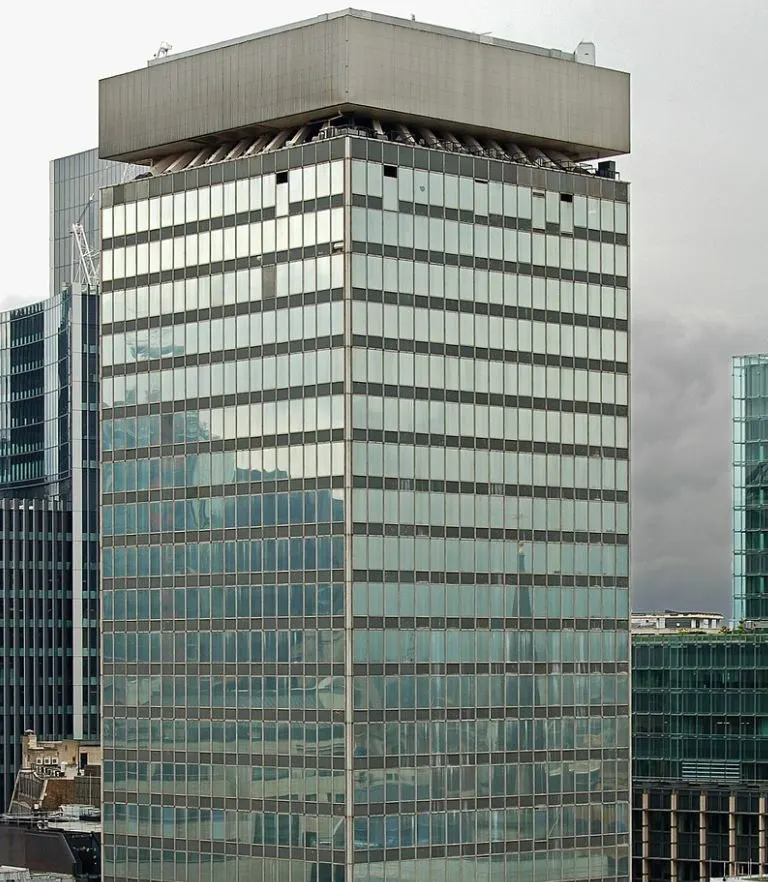
5. Not everybody agreed with the construction of this building
The people of London, and more specifically the various heritage protecting groups, had serious concerns with the construction of the building. The main concern was the height and the fact that it would block the views of the various historic landmarks in the area.
After reducing the original height of the structure, the developers were called in again by Secretary of State for Communities Ruth Kelly, and a public inquiry was launched shortly after.
The developers, “Land Securities Group plc,” eventually managed to get the green light in 2007, regardless of the negative perception regarding both the design and height of the skyscraper.
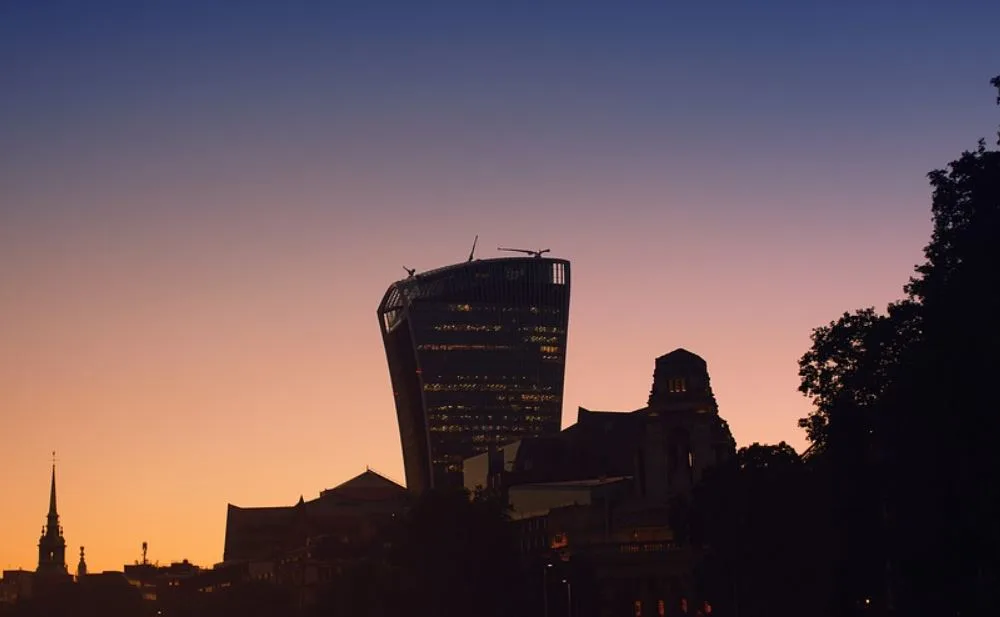
6. It took over 5 years before the building was completed in 2014
The Canary Wharf Group managed to acquire the contract to build the tower and the team was led by structural engineers from the Halcrow Group. This engineering company was subsequently acquired by CH2M and the Jacobs Engineering Group.
The ground level preparations were completed in 2009 and work on the basement started in January 2011. The steelwork of the tower’s core topped out in December 2012.
It would eventually take until April 2014 before the building was officially completed and the first tenants moved in the following month.
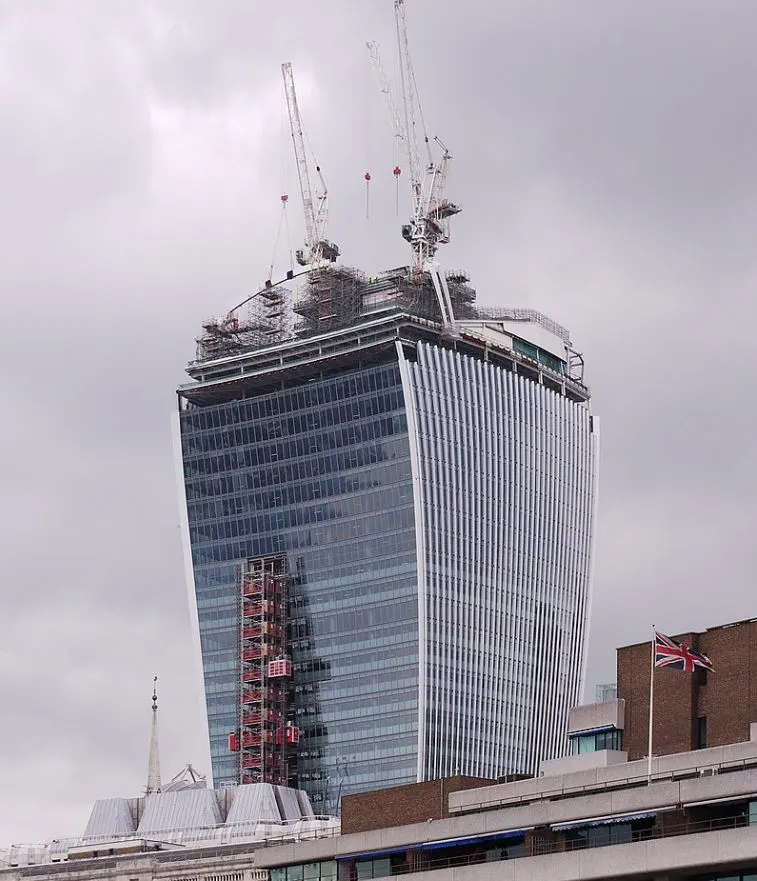
7. The building got some funny nicknames because of a hot issue
One of the most fascinating facts about the Walkie-Talkie Building is that it faced several issues upon completion. One of these was an unexpected wind tunnel effect created by the buildings curving shape. This had a remarkable impact on the street level which affected multiple projects in the surrounding area.
An even stranger effect was created when beams of sunlight reflected on the tower reached a temperature of up to 91 °C (196 °F) in the streets below. This solar glare problem resulted in a lot of damage as it melted cars and even allowed a local journalist to fry an egg!
Remarkably, this wasn’t the first time that a building designed by Rafael Viñoly suffered the same fate. It also happened to the Vdara hotel in Las Vegas which was temporarily referred to as the “Vdara death ray.”
British humor is amplified in the English tabloids and the skyscraper was mockingly referred to as the “Walkie-Scorchie” and the “Fryscraper.”

8. The Walkie-Talkie ended up being sold for a lot of money in 2017
Land Securities Group was the developer and owner of the building until the year 2017. It originally constructed the tower for a total cost of over £200 million, but the company posted a £95 million loss in 2016 due to lower demand for properties.
That’s why the company ended up selling the tower for a whopping £1.3 billion in July 2017 to a Hong Kong-based food company named “Lee Kum Kee Groups.”
This subsequently leased out the operations of the tower to CBRE’s Asset Services which still manages the building today.

9. The building received a less than enviable award in 2015
The design of the building, the location, its height, and the multiple problems upon completion all resulted in the Walkie-Talkie Building being awarded one of the least enviable architectural awards on the planet.
This award is called the “Carbuncle Cup” and was awarded to the worst new building in the UK the previous year. The structure “won” this cup awarded by the Building Design (BD) magazine in 2015.

10. The top 3 floors are occupied by the “Sky Garden”
The main reason why the building was allowed to be built in the first place was the integration of a free and public observation platform on the 3 top floors of the tower.
The 35th, 36th, and 37th floors of the building are occupied by the so-called “Sky Garden.” This was presented as an area full of trees and plants resembling other famous greenhouses.
The eventual result doesn’t exactly resemble the original plans as well. This, combined with the fact that visitors are only allowed to visit this space in 90 minutes, has led to further criticism.
Either way, it offers some amazing views from an elevated position in the historical heart of London, which in turn makes it an attraction to put on your London bucket list!
